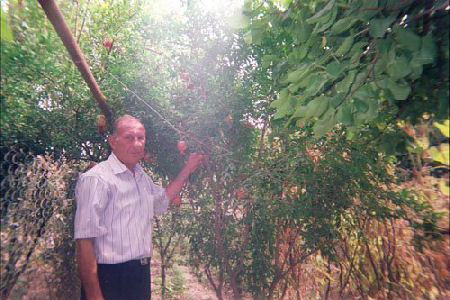One of those concepts that most North Americans don’t run into everyday is that of microfinance. You can read about it at the link, but in a nutshell it’s the idea that even “poor” people need access to financial services.
One particular area where this is true is financing for the small–by North American standards–loans that entrepreneurs in third world countries need to establish or grow their businesses. It seems obvious that funding for this kind of endeavour could result in economic growth in less privileged areas, that could in turn result in improvements in the quality of life. Maybe it’s not a gigantic effect on a global scale, but for each individual case it’s pretty gigantic for that person. The journey of a thousand miles, etc.
Of course for this to work, there would need to be someone who was qualified to determine which people were good candidates for success, so that the default rates on these loans would be low.
And even though these loans would be small compared to commercial loans in North America, they might seem like a lot more money that most people who were inclined to help out might have around. $300 or $1000 isn’t a very big loan really, but there probably aren’t a lot of people around who would happily front that much money to someone halfway around the world.
This is where the Internet and modern technology kicks in. This is what Kiva.org is all about.
How it works is simple: Kiva partners with microfinance companies in the regions where these entrepreneurs are. These partners pick out candidates who will be able to repay the loans. The loan requests are posted on Kiva.org. People who can afford to loan some money come to Kiva, and assign their money to various loans. I might put $25 a month into my Kiva account, and assign that $25 to be part of any of hundreds of loans. When enough people have committed money to any given loan to fund it, the loan is disbursed. The entrepreneur pays the money back on a schedule. When the loan is paid back, you get your money back (there is no interest–the recipient of the loan will pay some to cover the costs of the microfinance company, but this is not a profit-making endeavour for Kiva contributors), and can loan it out again.
So Kiva uses the Internet to match people who can lend to people who are vetted by microfinance companies (the overall default and lateness statistics for Kiva would absolutely shame most North American credit providers) around the world. And it aggregates small loan amounts from lots of lenders to fill these loan requests, so even people with only a small amount to contribute can make a difference.
I put some money in for the first time late last year, and I’ve watched the money I’ve got out in three loans come back in like clockwork. When those loans complete I will certainly loan the money out again. And I’ll stick a little more in there whenever I have some kicking around.

I’ve got some money out to a farming couple in Peru–they’re 28, with a 3 year old kid, and a loan of $275 (some of which came from me) is letting them improve their lives. When I think about my three year old, I feel pretty good about helping out, especially since it’s such small amount of money to me, making such a big difference to their lives.

I’ve got some money out to a mid-60s Azerbaijani who owns a pomegranate orchard. He looks like a hard-working grandpa. It’s amazing how much more real this kind of thing feels when you can see exactly who your money is going to.

I’ve got some money out to a Ukrainian clothing salemsan who started his own business to get out of a dead-end career in coal mining, and who wants to grow his business to make some money for his wedding.
All of them are on time with every payment.
The best part of this system though, is that my money can help more than once. If I put in a couple of hundred dollars, then loan it out, when the loans are paid back I can loan that money out again without putting in any more. It obviously doesn’t replace other charitable giving, but the fact that the money never really goes out of the system means that over time I can build up quite a pool on money in the Kiva system–adding small amounts here and there.
By aggregating these small amounts, Kiva is moving a truly massive amount of money into places where it is needed. Most loan requests are funded in less than three days. Right now a loan has been funded every 37 seconds so far in 2008.
Anyway, check it out, read up on how the system works, maybe check out some of the loan requests, and see if it’s something you would be interested in.
Me, I’m going to put some more money in. And I’m going to send my Mom some Kiva gift certificates for her Mother’s Day present, since she doesn’t need any more stuff.


3 comments for “Microfinance, Aggregation, Kiva”